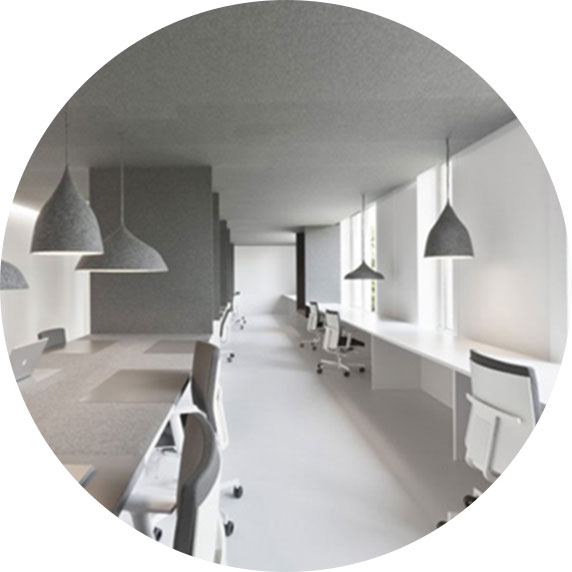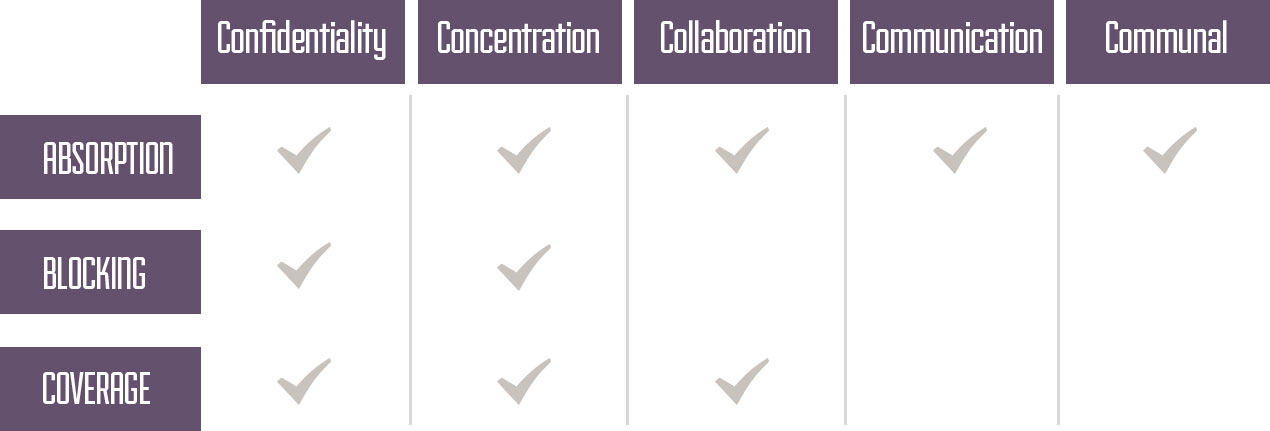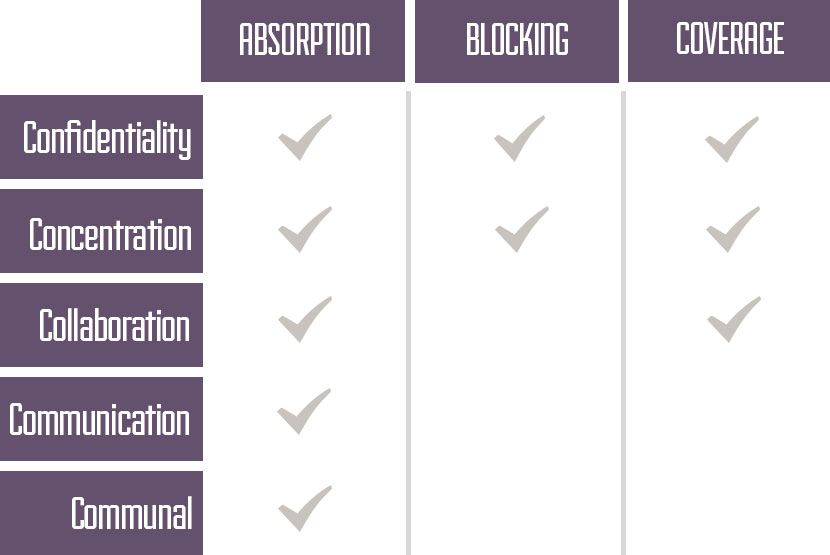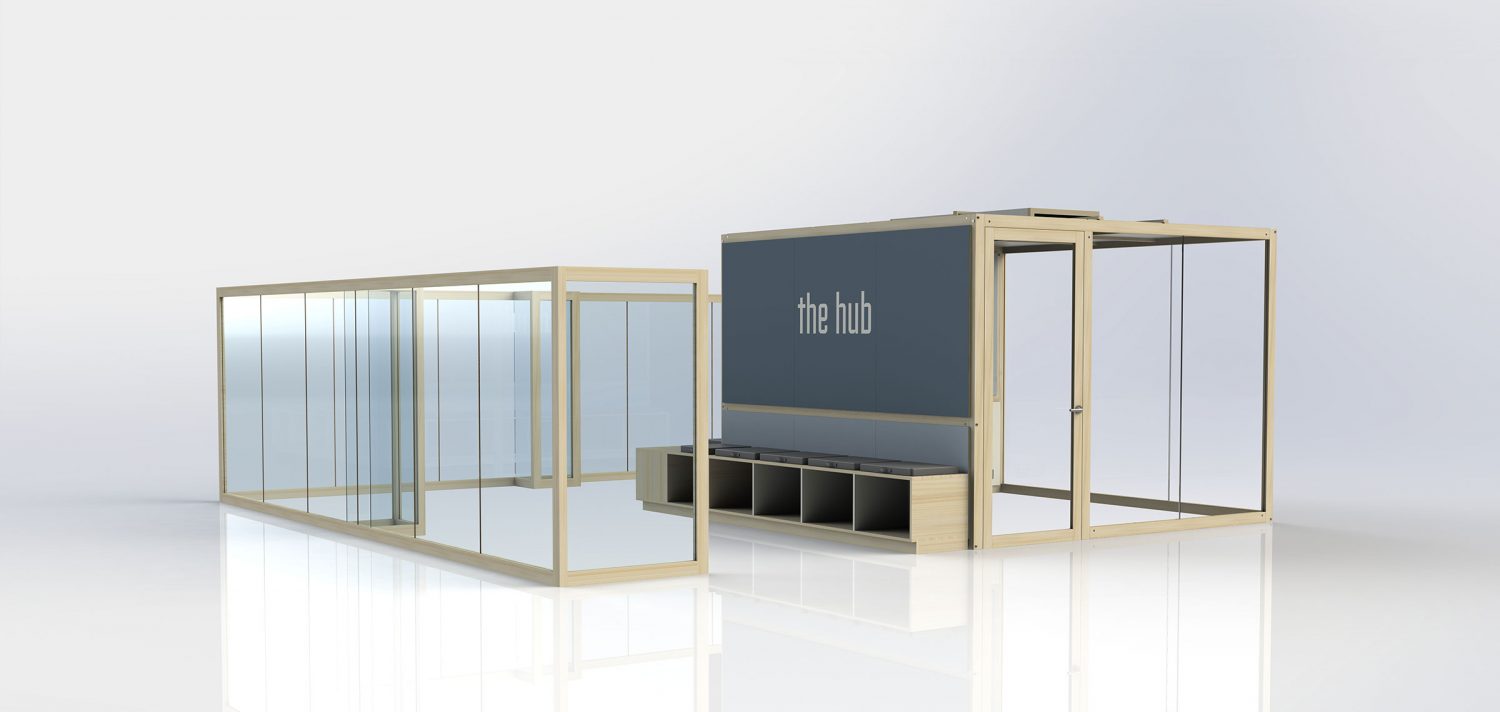Acoustic Hubs:
A Simple Guide

Working in an office environment typically involves tasks which require concentration, communication, confidentiality, and collaboration. There is also a need for communal areas where employees can relax and chat. It is increasingly important for employers to be able to create different zones for different types of work and each has a different acoustic requirement.
Absorbers correct the reverberation or reflection of sound in a room.
Blockers interrupt the sound path and act as barriers.
Covers provide a ‘mask’ by artificially increasing the ambient or background noise, thereby aiding speech privacy.
The Acoustic Zone Matrix below shows what requirements each area has.
Acoustic Zone Matrix



Confidentiality
These areas require absorption, blocking and covering. Blocking and covering are especially important – indeed, the higher the levels of blocking and covering, the greater the degree of speech privacy which can be achieved. Blocking and covering determine how much speech privacy can be achieved, but controlling reverberation time is also important.

Concentration
These areas require absorption, blocking and covering. Absorption is required to control reverberation and reflection; blocking with high screens is needed to interrupt sound paths. In areas of communication, a high level of speech intelligibility is desirable, but, in concentration areas, the need is for increased privacy, so sound masking or covering is essential.

Collaboration
For collaborative work, speech intelligibility is vital. These areas require absorption and covering. It is also beneficial to have the ability to get on with independent work. Again, reverberation needs to be controlled with highly absorbent ceiling elements, and ambient noise levels can be relatively high to allow for privacy as needed. Areas of concentration and communication can be separated from areas of collaboration with appropriate screening.

Communication
For good speech communication, the distance between the speaker and the furthest listener needs to be as short as possible. Reverberation must be controlled so that the direct sound between speaker and listener is unimpeded. Where possible, sound may be reinforced by using ceiling reflections. These areas need absorption.

Communal
Communal areas such as staff canteens are often ignored in acoustic design, but if they are not treated they can become areas of high noise levels. In these areas, surfaces are often hard and reflective which leads to high noise levels, thereby creating an unpleasant environment. These areas need absorbers which will lower reverberation times and it is recommended that these areas are located well away from areas of concentration.
All in one place
The Acoustic Hub is able to create all five zones in one place: it could be used for group meetings, confidential chats, small group collaborative work, for celebrations and presentations. The beauty of the Acoustic Hub is that it can be adapted and customised to fit your own office requirements.
